Indoor Garden Ideas for Small Spaces: How to Create a Thriving Mini-Garden Anywhere
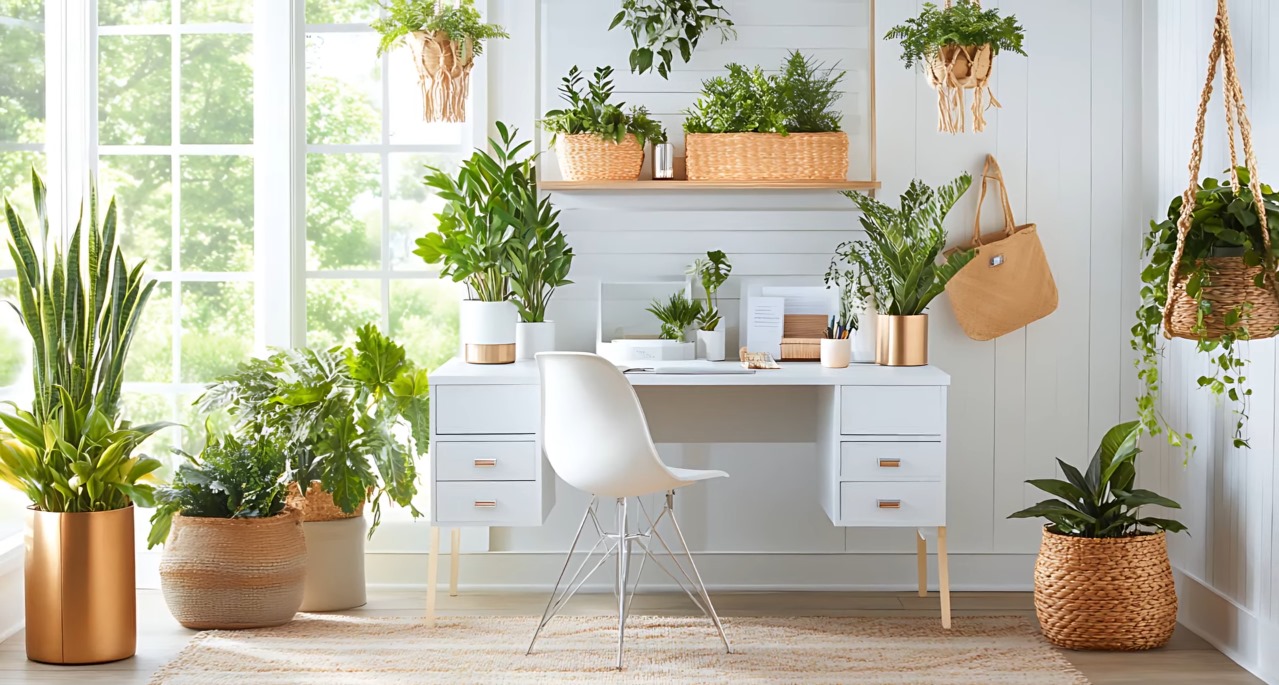
Can You Really Have a Garden in a Small Space? (Yes, Here’s How!)or “Can you really create a garden inside a small apartment or room?”
Answer: Yes—you can build a flourishing indoor garden in even the smallest nook of your home by utilizing vertical arrangements, hanging planters, and compact containers. With the right plant selections and smart use of available light, you’ll enjoy fresh greenery, cleaner air, and a mood-boosting display of nature without needing a backyard.
In this guide, you will learn:
What defines an indoor garden and why it works in tiny spaces
- Ten creative “small-space” indoor garden ideas with visuals you can adapt right away
- A step-by-step process for planning and setting up your mini indoor garden
- The best low-maintenance plants suited for compact areas
- Troubleshooting tips, FAQ answers, and styling advice to make your garden Instagram-worthy
By the end, you’ll have everything you need to turn a cramped corner into a lush, vibrant retreat—no yard required.
1. What Is an Indoor Garden? (Definition + Types)
An indoor garden is simply a collection of plants grown inside a building rather than outdoors in soil. Indoor gardens can range from a single potted succulent on a windowsill to an entire wall clad in greenery. Common types include:
- Vertical Gardens: Plants arranged on wall-mounted panels, trellises, or modular pockets to maximize vertical space.
- Hydroponic Systems: Soil-free setups where plant roots are suspended in nutrient-rich water, perfect for herbs or lettuces.
- Tabletop or Shelf Gardens: A grouping of pots or planters on a shelf, countertop, or tiered ladder, often used for herbs and small foliage.
- Hanging Planters: Suspended pots or baskets from ceilings, beams, or window frames, making use of overhead space.
“What counts as an indoor garden?”
Answer: Any collection of live plants grown inside under controlled light, water, and nutrient conditions—whether in soil, hydroponic trays, or hanging vessels—qualifies as an indoor garden.
2. Why Should You Start an Indoor Garden in a Small Space?
Even if you live in a studio apartment, an indoor garden offers multiple benefits:
- Improved Air Quality: Many common houseplants act as natural air purifiers, absorbing VOCs (volatile organic compounds) and releasing oxygen.
- Mental Health Boost: Studies have repeatedly shown that interacting with plants reduces stress levels, improves concentration, and elevates mood.
- Aesthetic Upgrade: A green corner instantly adds warmth and vibrancy to a neutral interior, perfect for infusing personality into compact living areas.
- Sustainable Living: Growing your own herbs or microgreens reduces packaging waste and ensures you have fresh flavors year-round.
“Why is indoor gardening good for small apartments?”
Answer: Indoor gardening transforms unused corners into living décor, purifies indoor air, and provides a calming hobby—all without requiring outdoor yard space.
3. Top 10 Indoor Garden Ideas for Small Spaces (With Examples & Visuals)
Below are ten high-impact, space-saving ideas. Wherever possible, include a photo or simple diagram to illustrate each concept—Google Discover favors visual content.
Hanging Planters from Ceiling or Shelves
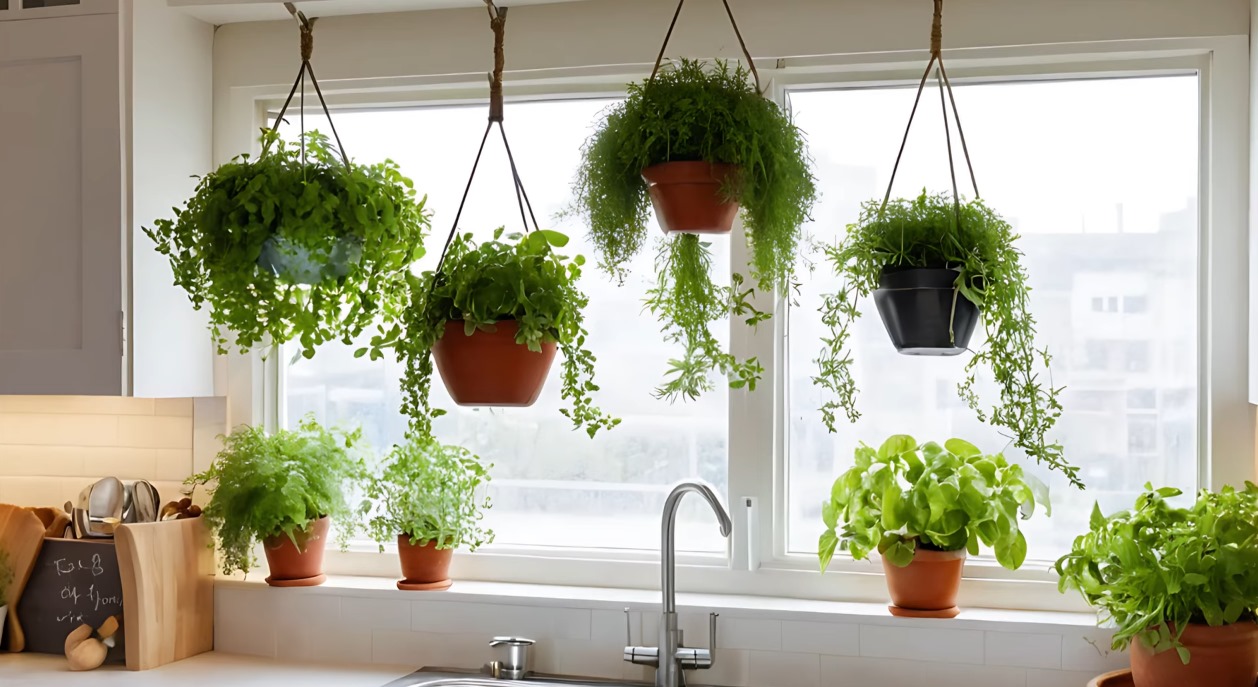
1. Use macramé hangers, ceiling hooks, or wall brackets to suspend lightweight pots.
2. Perfect for Pothos, Spider Plants, or String of Pearls that trail down beautifully.
Wall-Mounted Vertical Garden Frame
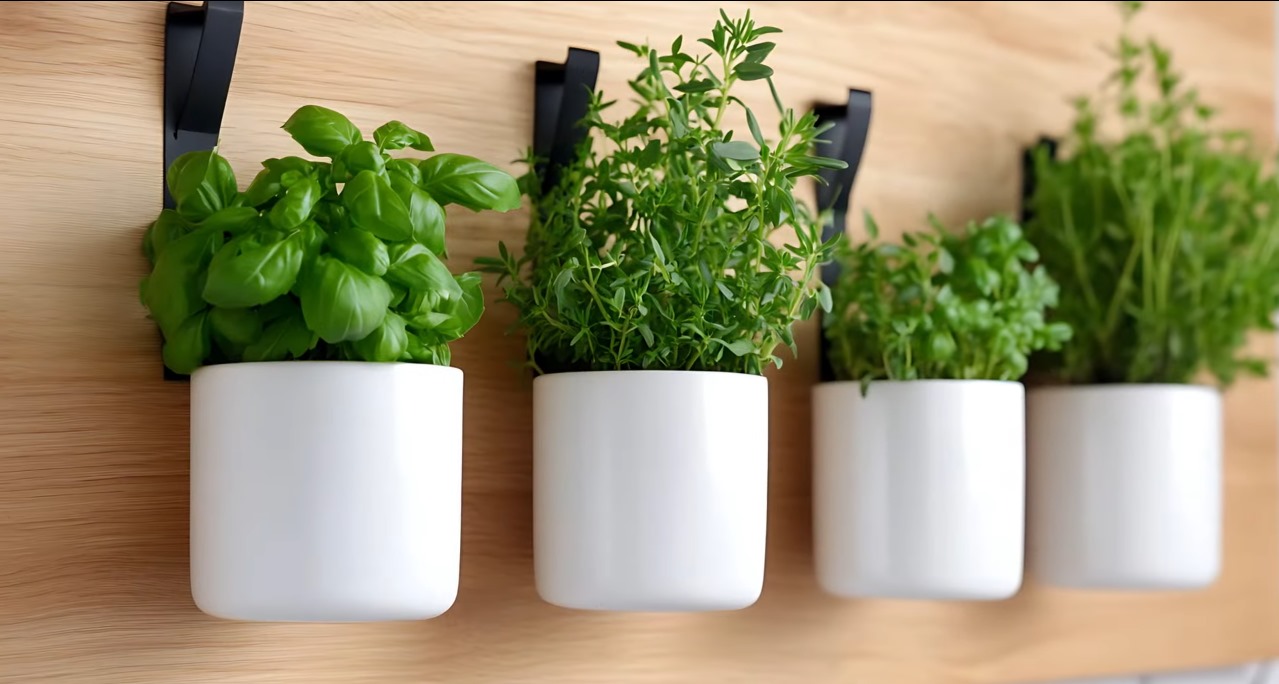
1. Install a shallow, framed pocket system or modular planting panel on a sunny wall.
2. Great for herbs (basil, mint) or small ferns; visually resembles living art.
Herb Garden on a Kitchen Windowsill
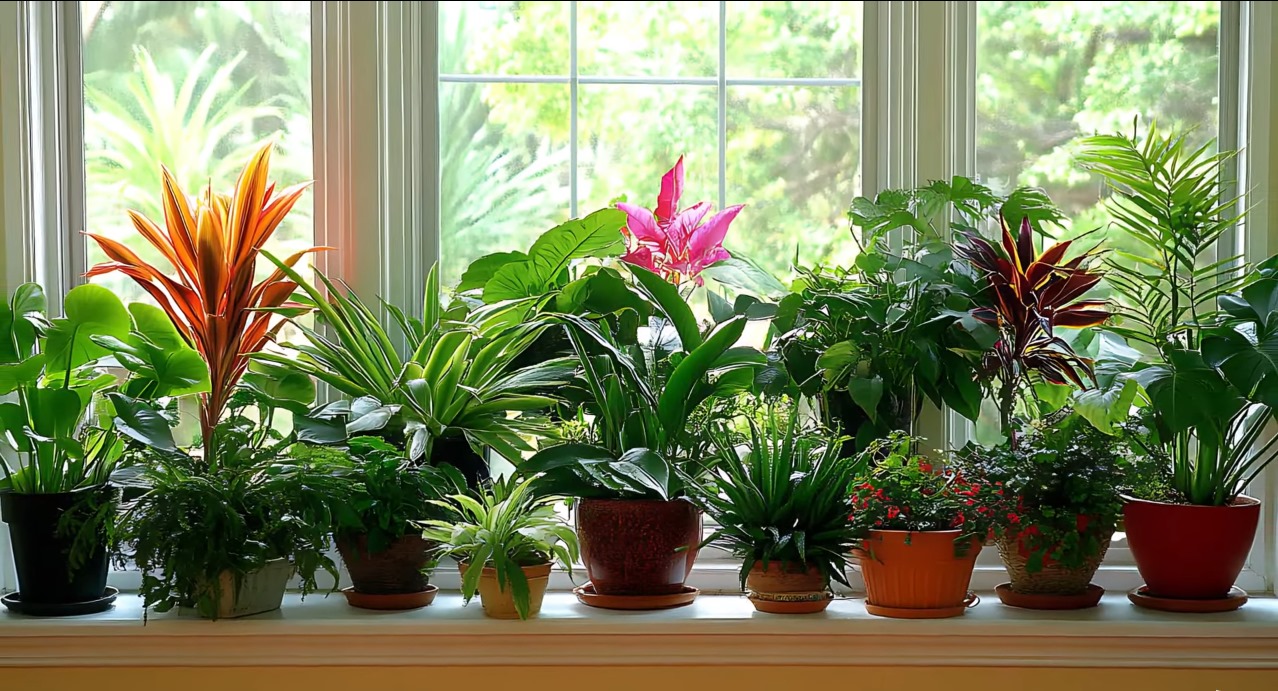
1. Line up small terracotta or ceramic pots on a south- or west-facing sill.
2. Easy-to-grow herbs like Basil, Parsley, Chives, and Thyme thrive here.
Recycled Jar/Bottle Mini-Garden
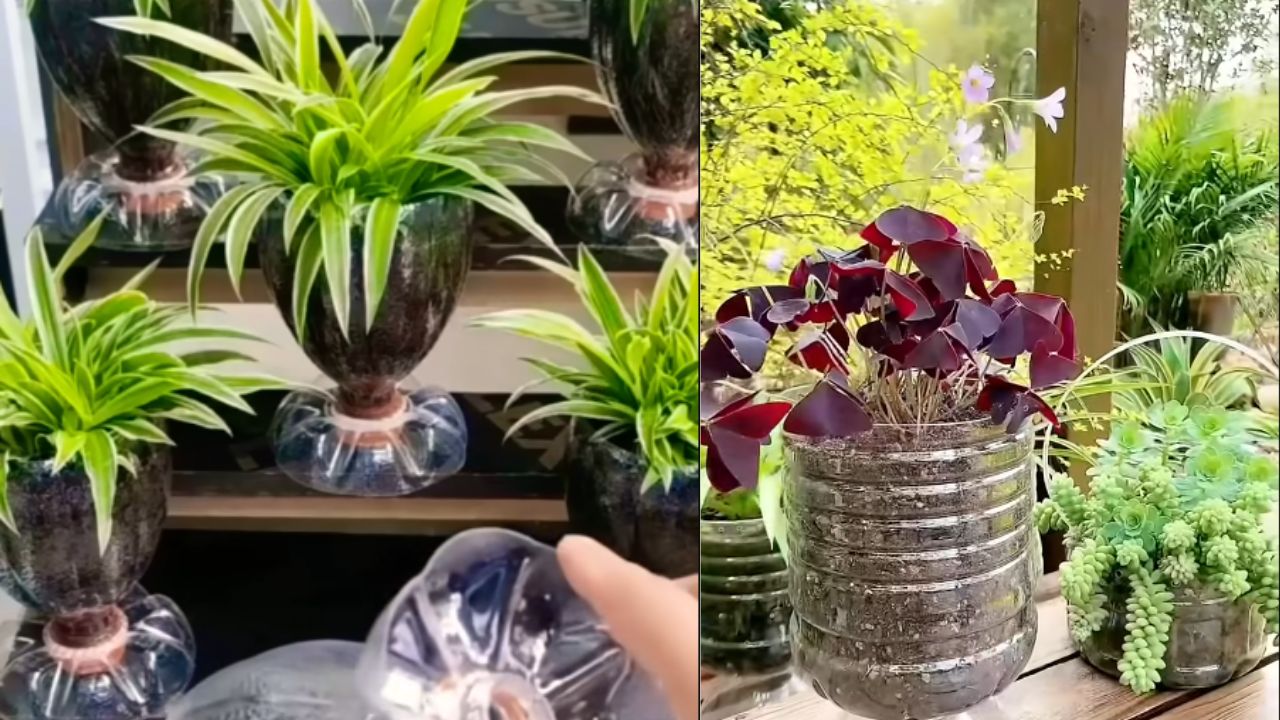
1. Repurpose glass jars, mason jars, or old wine bottles as tiny planters.
2. Plant single herbs or succulents—group them on a floating shelf for maximum impact.
Tiered Ladder Plant Shelf
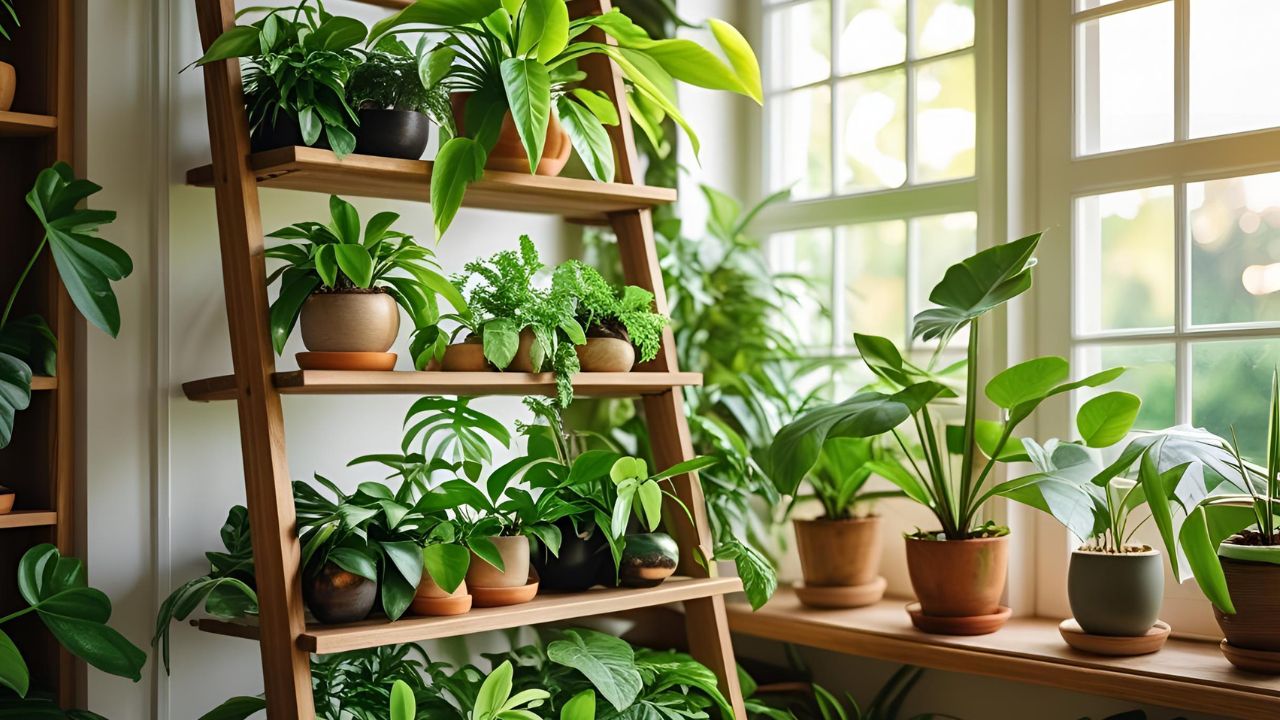
1. Lean a narrow, multi-level ladder shelf against a wall.
2. Stack small pots on each rung: ideal for succulents, cacti, or air plants.
Bathroom Garden with Moisture-Loving Plants
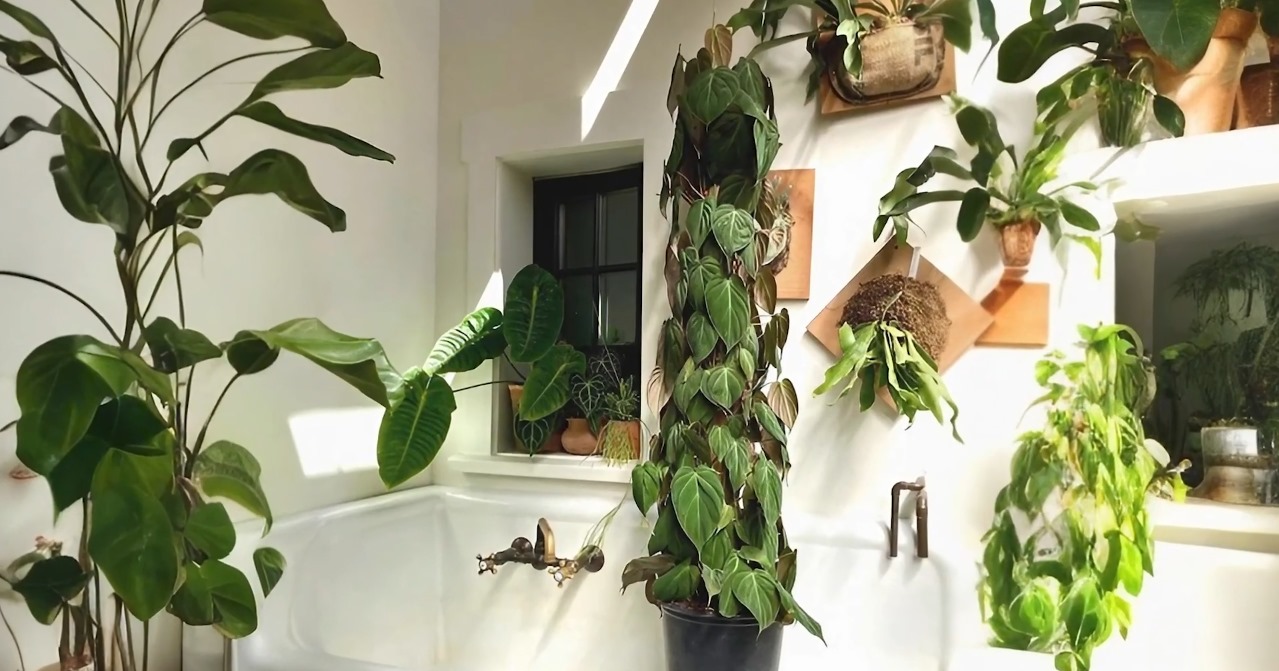
Place moisture-loving species like Boston Fern, English Ivy, or Peace Lily near a bathroom window or on the vanity.
The daily humidity keeps these plants happy, and the green adds luxury to your bathroom décor.
Macramé Plant Hangers Near Windows

1. Hang one or multiple macramé holders at varying heights in front of a window.
2. Combine different leaf textures—e.g., Philodendron, Tradescantia, Pothos—for a dynamic look.
Tabletop Mini Succulent Farm
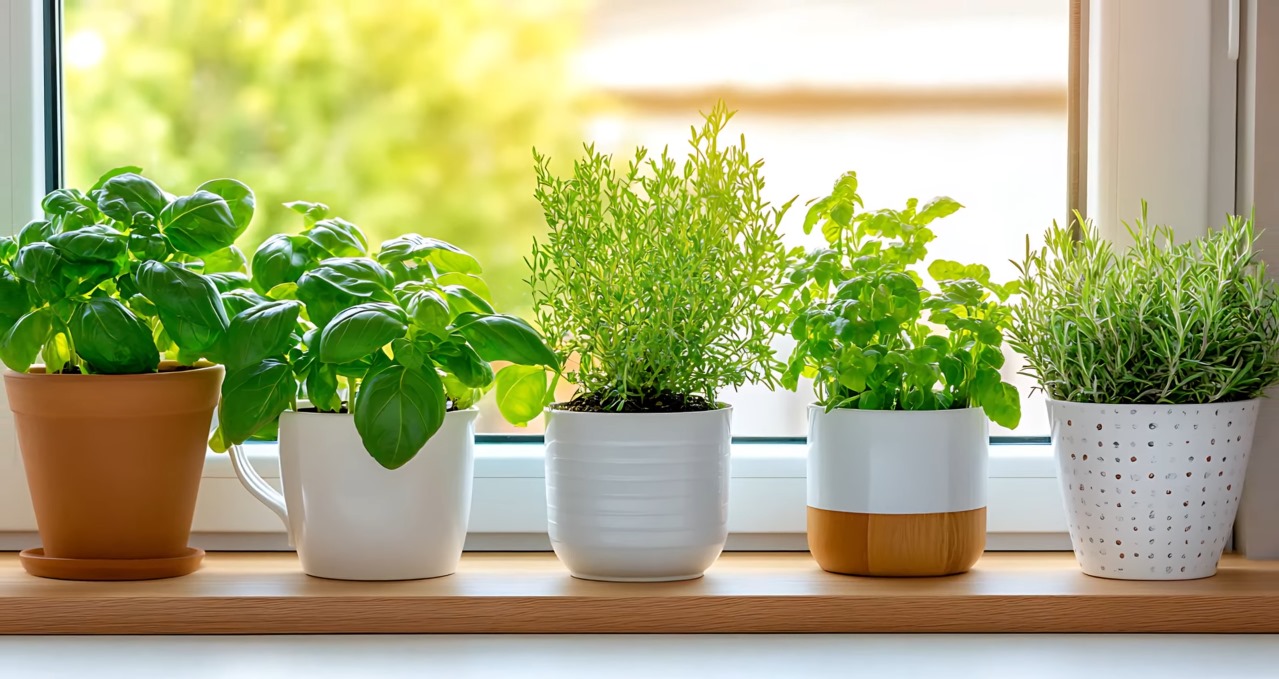
1. Arrange a variety of small succulents (e.g., Echeveria, Haworthia, Crassula) in a shallow tray or segmented planter.
2. Succulents need minimal soil and water, ideal for desks or side tables.
Corner Plant Stand with Built-In Lighting
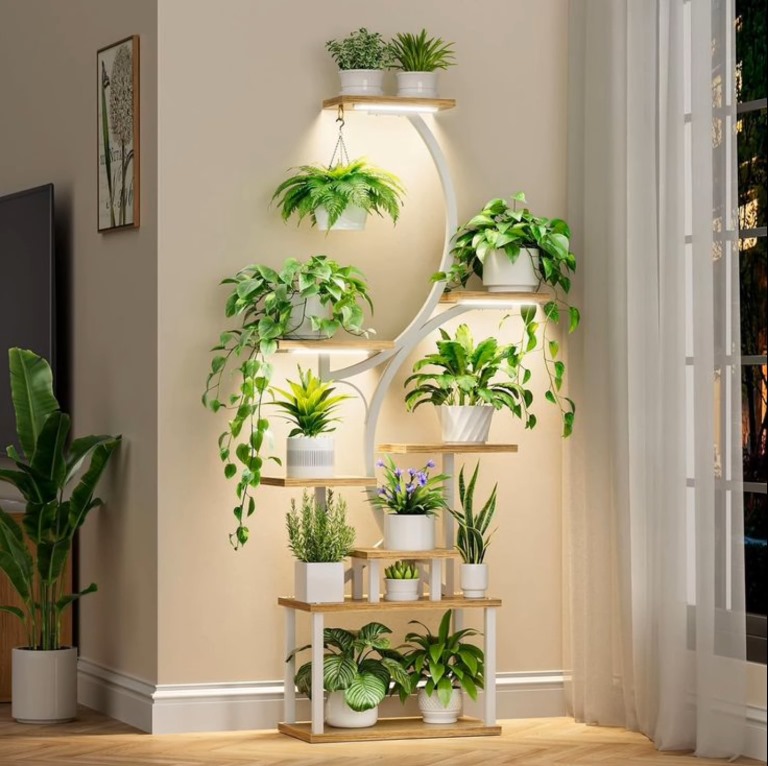
1. Purchase or build a slim, triangular shelf unit that fits into a corner, and add a small LED grow-light bar above.
2. Use it for shade-tolerant plants like ZZ Plant or Snake Plant that tolerate lower natural light.
Floating Shelves for Trailing Plants
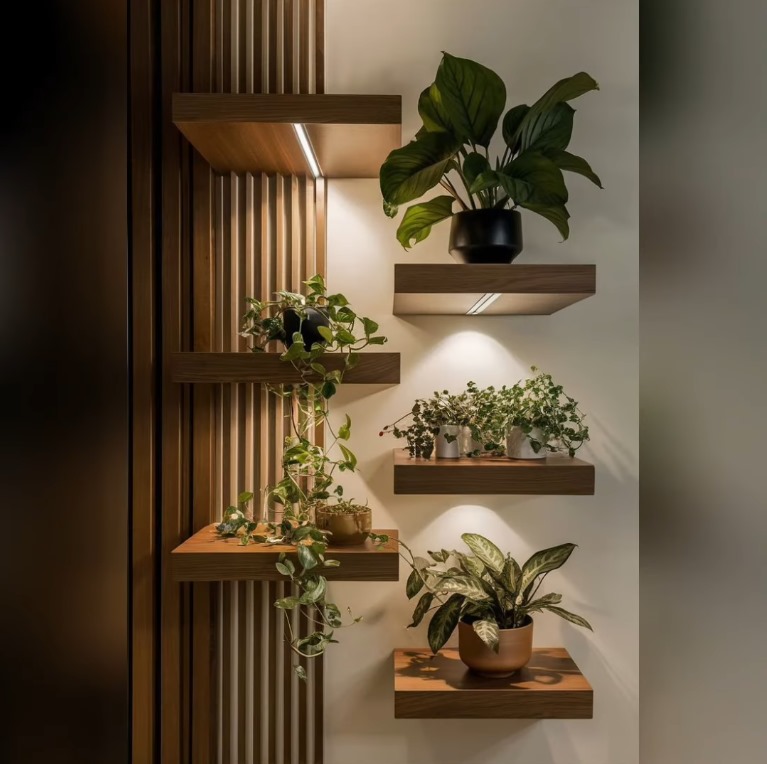
Install staggered floating wood shelves on a wall, allowing room for vines to cascade down.
Golden Pothos, String of Hearts, or Philodendron Brasil look particularly stunning in this arrangement.
🖼️ Pro Tip: Use compressed, web-optimized images with descriptive ALT text such as “vertical-indoor-garden-frame-small-apartment” to boost Google Discover visibility.
4. How to Set Up an Indoor Garden in a Small Apartment (Step-by-Step)
Creating an indoor garden in a tight space requires thoughtful planning. Follow these steps to ensure success:
- Assess Your Light Availability
- Identify the brightest spots (south- or west-facing windows).
- If natural light is insufficient (less than 4–6 hours/day), plan to add full-spectrum LED grow lights.
Choose the Right Containers
For a minimalist look: use uniform terracotta pots or sleek ceramic planters.
Consider self-watering pots or those with drainage holes and a matching saucer to prevent overwatering.
Select Beginner-Friendly Plants
If you’re new, start with hardy options like Snake Plant, ZZ Plant, Pothos, or Spider Plant—they tolerate irregular watering and lower light.
Prepare a Well-Draining Growing Medium
Use a high-quality indoor potting mix, often blended with perlite or pumice for extra drainage.
For hydroponic setups, follow the manufacturer’s instructions for nutrient solutions and inert media (rockwool, clay pebbles).
Watering & Fertilizing Schedule
Water only when the top inch of soil feels dry (usually once every 1–2 weeks for most houseplants).
During spring and summer, give the plant a water-mixed fertilizer that has all the important nutrients every 4 to 6 weeks to help it grow well.
Design Your Layout
Group plants according to light needs—shade-tolerant ones farther from the window; sun-lovers directly in the bright spot.
Use furniture corners, empty wall space, or even the space above a desk to maximize floor real estate.
“How do I start an indoor garden in a small space?”
Identify light sources, pick compact, low-light–tolerant plants, use vertical or hanging systems, and maintain a simple watering/fertilizing routine.
5. Best Indoor Plants for Small Spaces (Low-Maintenance + Air-Purifying)
For a small-space indoor garden, you want plants that stay relatively compact, require minimal fuss, and ideally improve air quality. Here are six top recommendations:
Snake Plant (Sansevieria trifasciata)
- Height: 1–2 feet in a small pot
- Light: This plant can live in both low light and bright light, as long as the light doesn’t shine on it directly.
- Care: Water the plant only a little and wait until the soil becomes dry before watering again.
- Benefit: Excellent at filtering benzene and formaldehyde
Pothos (Epipremnum aureum)
- Growth: The plant has hanging vines that you can let fall down or guide to grow upward.
- Light: Bright indirect to moderate light
- Care: Water the plant normally, but make sure the top 1 to 2 inches of soil are dry before you water it again. Spider Plant (Chlorophytum comosum)
Appearance: Arching leaves with baby “spiderettes”
- Light: It grows best in bright light that doesn’t shine directly on it, but it can also handle medium light.
- Care: Try to keep the soil a little damp, but the plant can handle being forgotten once in a while.
- Benefit: This plant is popular because it helps clean the air by removing harmful chemicals like formaldehyde.
ZZ Plant (Zamioculcas zamiifolia)
- Growth: Upright, waxy leaves; grows slowly to 1–2 feet tall
- Light: Grows well in low to medium light, as long as the light isn’t direct.
- Care: Drought-tolerant—water only when completely dry
Peace Lily (Spathiphyllum spp.)
- Features: Elegant white blooms, lush green foliage
- Light: Prefers medium to low indirect light
- Care: Make sure the soil stays evenly damp, but don’t let it get too wet or soggy.
- Benefit: One of the best air-cleaning plants—removes ammonia, formaldehyde, and mold spores
Aloe Vera (Aloe barbadensis miller)
- Size: Compact rosette form; typically 6–12 inches tall in a small pot
- Light: Needs bright light without harsh rays, or sunlight in the morning.
- Care: Water deeply but infrequently; let soil dry fully between waterings
- Bonus: Harvest gel for natural first-aid uses
“Which indoor plants grow best in small apartments?”
Compact, low-light–tolerant species like Snake Plant, ZZ Plant, and Pothos thrive in small spaces with minimal care.
6. Tips to Maximize Space in Small Indoor Gardens
Even with creative ideas, tight quarters can feel cramped. These clever tips will help you make the most of every space:
1. Use Vertical & Hanging Solutions: Install floating shelves, wall-mounted planters, or ceiling hooks to lift plants off tabletops.
2. Opt for Narrow or Tiered Shelving Units: Leaning ladder shelves or slim corner stands allow you to stack multiple pots in one footprint.
3. Integrate Plants into Existing Furniture: Look for side tables, bookshelves, or desks with built-in plant cubbies or attachable ledges.
4. Place Mirrors Behind Plants: A strategically hung mirror reflects light and creates the illusion of a more expansive green wall.
5. Choose Multi-Purpose Pieces: Consider a rolling cart with wheels; transform it into a mobile plant station you can move to follow the sun.
🎁 Bonus Tip: Use self-watering pots with a water reservoir at the bottom. They reduce the frequency of watering, keep soil moisture consistent, and prevent root rot from overwatering.
“How can I garden in a small apartment without clutter?”
Go vertical—opt for wall-mounted or hanging planters, and choose slim, multi-tiered shelving that occupies minimal floor space.
7. Common Problems and Smart Solutions for Indoor Gardeners
Even the most diligent gardeners face hiccups. Below are typical challenges and easy fixes:
Not Enough Light
Symptom: Leggy stems, pale leaves, slow growth.
Solution: Add a full-spectrum LED grow light overhead or near the shelf. Position plants closer to available windows or rotate them weekly to ensure even light distribution.
Overwatering & Root Rot
Symptom: Leaves turning yellow, soft and squishy stems, and a bad smell coming from the soil.
Solution: Switch to pots with drainage holes and use a well-draining potting mix. Water the plant only after the top 1 to 2 inches of soil have dried out. Consider self-watering containers that regulate moisture.
Indoor Pests (Spider Mites, Fungus Gnats, Mealybugs)
Symptom: Fine webbing, small moving dots in soil, white cottony patches on leaves.
Solution: Wipe leaves with a mild soapy water spray or neem-oil solution. Allow soil to partially dry to disrupt gnats. Quarantine infected plants away from healthy ones.
Too Dry or Too Humid Environment
Symptom: Brown leaf edges (dry air) or yellowing leaves (excess humidity).
Solution: Use a small humidifier near humidity-loving plants (e.g., ferns). For overly humid spots (bathrooms without ventilation), keep pots off damp surfaces and open a window occasionally.
“How do I keep my indoor garden healthy?”
Balance light, water, and humidity. Use well-draining soil, appropriate containers, and adjust placement or supplemental lighting to meet each plant’s needs.
8. FAQs About Indoor Gardening (Answer Box Targets)
Implement FAQ schema markup around this section to improve chances of appearing in Google’s “People Also Ask.”
How much sunlight do indoor plants need?
Most houseplants thrive with 4–6 hours of bright, indirect light daily. If you lack a proper window, install full-spectrum LED grow lights for 8–12 hours per day on a timer.
Can I grow vegetables indoors?
Yes. Compact vegetables such as leafy greens, cherry tomatoes, and microgreens can be grown under LED grow lights on shelves or in hydroponic kits. Ensure consistent lighting (12–16 hours/day) and temperature around 65–75°F (18–24°C).
Are indoor gardens expensive to maintain?
Not necessarily. Basic setups cost little more than pots and potting mix. LED grow lights can be an initial investment (around $20–$50 per bulb), but energy-efficient models run on low wattage. Over time, home-grown herbs and greens often save money compared to store-bought.
What are the easiest indoor plants to grow?
The Snake Plant, ZZ Plant, and Pothos are the most popular choices. They tolerate a wide range of light levels, survive irregular watering, and rarely develop serious pest issues.
Can I use kitchen scraps to grow plants indoors?
Absolutely. You can regrow green onions from their white root ends, propagate basil from cut stems in water, or sprout garlic cloves in a small shallow dish of soil. Just ensure proper lighting and transplant to potting mix once roots develop.
9. Real-Life Indoor Garden Setups (Inspiration + User Examples)
To spark your creativity, here are two quick case studies and ideas from small-space gardeners:
Case Study 1: “Urban Kitchen Mini-Farm”
Sarah, living in a 400 sq. ft. studio, mounted a 12-pocket felt vertical pocket system on a sunny kitchen wall. She grows basil, parsley, and mint. Under-cabinet LED strips supplement light on cloudy days. Her morning routine includes snipping fresh herbs for breakfast omelets.
Case Study 2: “Bathroom Rainforest Corner”
Raj turned a small corner near his shower in his one-bedroom apartment into a spot for plants that love humidity. He put a slim corner shelf and arranged a Boston Fern, English Ivy, and Peace Lily on it. The daily steam from showers keeps his plants lush, and the greenery makes his bathroom feel like a spa.
Your Turn: Share a photo of your own small-space indoor garden on Instagram or Facebook with #MySmallSpaceGarden, and tag us to be featured in our monthly showcase!
10. Bonus: How to Make Your Indoor Garden Instagram-Worthy!
If you love sharing your greenery online, consider these styling tips:
- Optimize Lighting for Photography: Use natural morning light from the window; avoid harsh midday sun that casts strong shadows.
- Coordinate Pots & Planters: Select a cohesive color palette (e.g., matching white ceramic pots or rustic terracotta) to give the display a polished look.
- Use Decorative Elements: Add small pebbles, driftwood pieces, or miniature figurines to your planters for added interest.
- Incorporate Textures: Combine broad-leafed plants (e.g., Monstera) with fine-textured ones (e.g., ferns) to create depth.
- Crop Thoughtfully: Frame the shot so the edge of the pot or hanging planter sits just out of view; focus on the lush leaves cascading gracefully.
For captions, mix English and Bengali—e.g., “Turning my tiny Dhaka balcony into a green haven 🌿💕 #GreenInTheCity —to resonate with both local and international followers.
📱 App Recommendation: Use a plant-care app (e.g., Planta or Back to the Roots) to set reminders and track watering, fertilizing, and light needs.
11. Conclusion: Small Space, Big Green Dream
No matter how limited your living space, an indoor garden can thrive with a bit of planning, creativity, and the right plant choices. By using vertical systems, hanging planters, and compact shelving, you can maximize every inch while enjoying the proven benefits of greenery—better air quality, reduced stress, and an uplifting splash of color. Start small: pick one ideal spot, grab a low-maintenance plant, and watch your confidence and green thumb grow together.
Ready to take the plunge? Choose one of the ten ideas, gather your materials, and get planting today! Don’t forget to comment below with your favorite idea or share your progress on social media with #MySmallSpaceGarden. Happy growing! 🌱